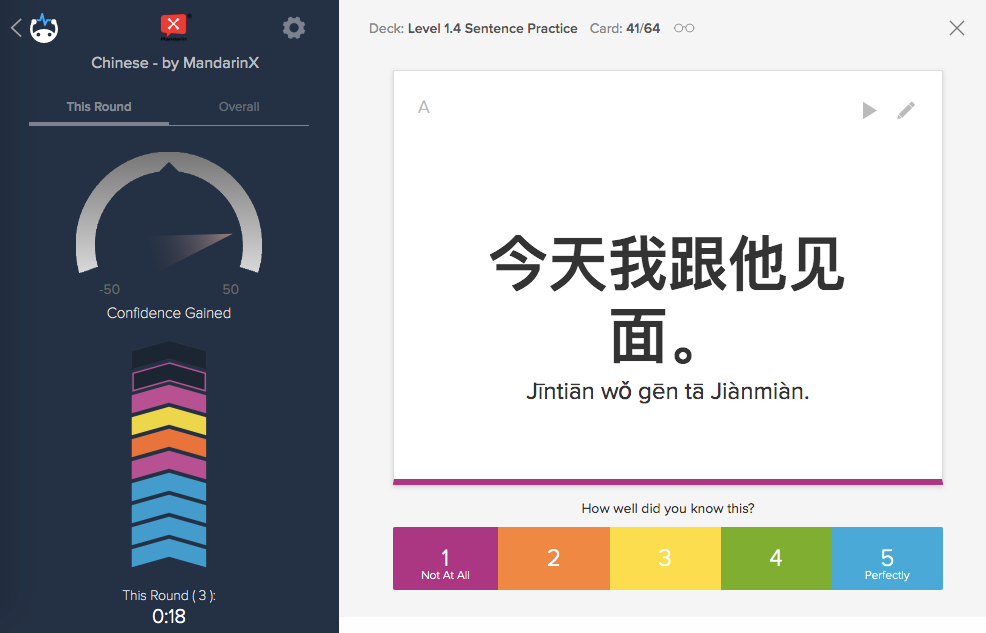Chinese bilingualism today is more important than ever.
It's no secret that China has become an economic and cultural powerhouse on the world stage. Understanding and speaking even a basic level of Chinese can help you succeed in business, expand your educational possibilities, and even simply communicate better with your friends and family.
These are just some of the reasons why learning Chinese can enrich your life and boost your career prospects.
But "Chinese" actually refers to a family of languages, of which the most widely spoken are "Mandarin" and "Cantonese". This has many new potential Chinese learners asking themselves: Mandarin vs. Cantonese, what's the difference? And which one should I learn?
Mandarin and Cantonese are the two most commonly spoken dialects of Chinese. Mandarin has spread across almost all of China, as the “standardized” form of Chinese, yet Cantonese is still commonly spoken in Hong Kong and is the main dialect in Guangdong, which contains the important industrial city Guangzhou as its capital. It's also common in regions that have had a historically large immigration from Hong Kong, such as the West Coast of Canada.
In this article, we'll be tackling the differences between Mandarin and Cantonese and the dialect you should learn. We'll also guide you towards the best way to learn Chinese.
What are the differences between Mandarin and Cantonese?

Chinese is a unique language. Unlike English and many other languages around the world, written Chinese uses a “pictorial” representation rather than a phonetic one. Chinese characters are not “sounded out” but are rather used to represent ideas. (e.g. 人 is the symbol for “person”.) Thousands of such symbols, or “radicals”, are combined into characters to form more complex ideas, independently from the sounds that verbal speakers might use to describe them. A single passage in written Chinese can be spoken verbally in any of over 50 different spoken dialects across China.
The two most widely spoken dialects are Mandarin and Cantonese. They both use the same characters and learning one makes it much easier to learn the other ... but the pronunciation is completely different.
In fact, the differences between the two dialects is that they are so significant, that it's been hotly debated whether or not they should be considered separate languages rather than simply two dialects of an umbrella Chinese language. The two are not even mutually intelligible by native speakers of either.
Here are four major differences between Mandarin and Cantonese:
- Tonal differences. While they are both tonal languages (where different tones give different meanings to the same sound), the number of tones is different. Mandarin has only four tones per sound, while Cantonese has at least six (and can have up to nine). Mandarin and Cantonese even have different vowels and consonants.
- Level of difficulty in speaking. This disparity in the number of tones can make it easier to learn Mandarin than Cantonese. Cantonese requires you to not only recognize the tone by the “movement” of the tone, but also the pitch.
- Level of difficulty in writing. Even the written form of Cantonese can be more complex. Technically, Mandarin and Cantonese use the same characters, but in reality, most Mandarin speakers have switched over to the simplified characters adopted in the 1960s while there are still millions of Cantonese speakers continuing to use the traditional characters.
- Grammatical structures. Non-native speakers may find Cantonese to be simpler to understand because it follows a very logical, set pattern. Mandarin Chinese tends to change the structure of the sentence often, depending on subject and emotional meaning.
- Degree of usefulness. Cantonese is quickly becoming the less useful language since business and government activities in China are conducted in largely in Mandarin. And most people, even Cantonese speakers, have learned Mandarin as a second language in school. You are therefore bound to be able to communicate with most people in Mandarin, a fact that will not be true if you learn Cantonese. However, you will find Cantonese more useful if you're planning to do primarily interact with people in Hong Kong or other regions where Cantonese is dominant, such as the West Coast of Canada.
The key takeaway is that the differences between Mandarin and Cantonese are vast, so don’t assume that knowing one will automatically translate to understanding the other. Here at Brainscape, we have a complete set of Mandarin Chinese flashcards, with tons of user-generated Cantonese flashcards as well!.
Now that we have a better understanding of Mandarin vs. Cantonese, which Chinese dialect should you learn?
[Pssst. Interested in the best apps to learn Chinese Mandarin? Check out our linked guide!]
Which Chinese dialect should I learn?
The answer is short and sweet: if your goal is to be widely understood, you should learn Mandarin. That's because ...
1. Mandarin is the official language in China and Taiwan
Mandarin is now the official language in China and Taiwan and is used by most of the Chinese schools, colleges and universities, as well as their TV programs, movies, and radio stations. Mandarin is also one of the six official languages in the United Nations. Even Hong Kong schools have begun switching from Cantonese to Mandarin education since around 1997 (when China regained its sovereignty from the U.K.).
This means that Mandarin can be understood even China as well as Hong Kong, Macau and Canton (the main regions who still speak Cantonese), and more and more Cantonese speakers are learning Mandarin nowadays.
2. Mandarin is being taught in public schools
Since there are so many dialects, the Chinese government—over the past few centuries—has pushed for Mandarin to be taught in schools and used in all public media to help improve verbal communication possibilities across the country. Modern Chinese speakers now often learn both their regional dialect and Mandarin to maximize their communication potential.
This means more and more Cantonese speakers are learning Mandarin nowadays.
3. Mandarin is easier to learn
As we covered above, Mandarin is easier to learn in regards to both writing and speaking. Cantonese is seen to be more difficult because it has from 6 to 9 tones, each of which signify different things (while Mandarin only has 4 tones). In addition, because of its greater prevalence, it is easier to find Mandarin study materials than Cantonese study materials.
Should you write off Cantonese completely?
We argue that learning any language has its own benefits, so it is useful to learn whichever one you prefer. There is no need to restrict yourself to learning just one of these languages.
If you really want to be able to connect with people from Hong Kong, Macau, and Canton, you can still consider learning Cantonese. It also still has a powerful influence in China, especially through Hong Kong’s powerful economy and widespread pop culture influence.
And since all of the Chinese dialects use the same written characters and a grammar similar to that of Mandarin, it is not unreasonable to attempt to learn both Mandarin and Cantonese, as long as you gain a strong grasp of the characters first!
How should you start learning Chinese?
Warning: shameless plug coming up. The most effective tool to learn Chinese is, hands-down, Brainscape. Our web and mobile Chinese flashcard app leverages the cognitive science of learning a language to empowers students to master Chinese in HALF the time.
[Here's our complete guide on how to learn Chinese more efficiently]

One of the challenges for learning Chinese—either Mandarin or Cantonese—will be mastering the characters and memorizing the tones.
The best way to learn the characters—and several thousand key Mandarin vocabulary words and grammatical concepts—is through sheer memorization. Brainscape's flashcards, designed by Mandarin X, are built precisely for this; to help students learn large amounts of information efficiently and effectively.

If you’re a serious learner, Brainscape is the most effective way to master Chinese because it uses:
- Active recall. Our flashcards challenge you to actively recall the answers from scratch.
- Spaced repetition. This is the world's best method of learning a language that repeats the exposure to information at time intervals tailored to your comprehension.
- Metacognition. By asking yourself how well you know the answer, you establish additional and deeper neural pathways that result in long-term memory.
If you're feeling particularly geeky, learn more about the cognitive science behind our language learning methodology. OR use our complete guide on how to learn Chinese more efficiently.
Start now
Now that you know a bit about the differences of Mandarin vs. Cantonese, choose. And then start learning.
Any language is challenging to learn, and Chinese languages are no different. But it's absolutely doable if you choose the right language learning tools, create a study plan, and commit to it, consistently learning over a long time.
If you do those things, you will learn Mandarin or Cantonese.
Get started today, and best of luck in your studies!
